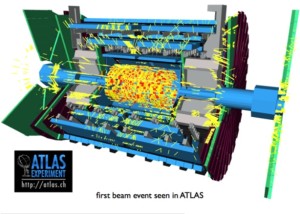Even though we are confident that the values of physical constants are valid in time, we cannot exclude that during the very first period of saying some “seconds,” the physical laws and constants could have been different.
If this is a potential possibility, then under unknown circumstances, it might reoccur always and everywhere. The conditions under which this could reoccur are extremely difficult to investigate as the universe is hardly open for experiments, so most answers on such questions will remain a mystery.
Was it chaos at the start?
We can state that we have not observed deviations of these physical constants so far. We do not know what happened in the first “Planck period” of “time,” but we know that after a while, matters became stable in physical constants. Also for the Planck period itself. What is happening due to energy transformations before the first Planck period under stable conditions is a mystery.
The Dutch Paradigm introduced in the chapter Big Bang a model of the first principles that allow for a basic understanding of the role of free energy.
Understanding the causalities of energy transformations is crucial for research on the natural phenomena. To recall Feynman’s description of energy:
There is a fact, or if you wish, a law, governing all natural phenomena that are known to date. There is no known exception to this law—it is exact so far as we know. The law is called the conservation of energy. It states that there is a certain quantity, which we call energy, that does not change in manifold changes which nature undergoes. That is a most abstract idea, because it is a mathematical principle; it says that there is a numerical quantity which does not change when something happens. It is not a description of a mechanism, or anything concrete; it is just a strange fact that we can calculate some number and when we finish watching nature go through her tricks and calculate the number again, it is the same.
What tricks is nature performing during such a transformation? And how are we able to reproduce what happened in that period?
Regular science uses for this purpose the method of experimental reduction extensively. The Large Hadron Collider in Geneva can perform experiments at a scale not seen before in Particle Physics.
This type of investigation enforces collisions of protons accelerated to almost the speed of light. After the collision, we observe the decay processes with an impressive measuring instrument, the Atlas.
This method of destructive collision of particles, in particular, protons, to reduce them to even more fundamental particles has given birth to a lot of new “particles,” but with one distinctive characteristic: they all have an extremely short lifespan. Now all is relative: if the Planck time is 10ˉ⁴⁴ seconds, then a particle that has a lifespan of 10ˉ²⁰ seconds is comparatively “stable,” but this is still a very short period in macrocosmic perceptions. The idea is that these short living particles are also fundamental particles and that they play an important role in constituting the stable particles like the neutron and proton. This proton and neutron have invariant mass, and this property is unclear in its origin. The number of particles that showed up in this way through the years has become quite large, and it took much creative thinking to reduce these findings to a more comprehensible format. These new particles are assumed to show invariant mass. Nevertheless, we are witnessing and measuring energy transformations, which makes it is a bit curious while we are searching for mass manifestations.
Fortunately, we see that under the same test conditions, we get the same result; there is some scatter in findings, but these are well understood and related to the method of investigation and measurement.
It might be that these short living particles have substance and that eventually, they show mass behavior. However, it could also be that we see a process of decay that is so precise, that it shows the same energy transformation characteristics each and every time under the same conditions. In other words, this decay process could be another example of a perfect transformation of energy from one state to the other.
Therefore, a provocative question may arise:
Why are we so intensely searching for fundamental particles with invariant mass?
If we take Einstein’s equation E = mc2 into account, then it would be more likely that we should search for energy transformations from the very start.
However, how can we perform such an investigation?
If we apply much energy to conclude that all fundamental particles are really “just” made out of energy, then how can we observe and measure such phenomena?
Within the framework of The Dutch Paradigm also use another method of investigation will be applied.
A well-known one is to do experiments of thought.
There is no harm in using thought experiments. That is an accepted regular method to make progress as well, provided that data derived from precise experimental observations be respected. Almost every new idea in physics starts in this way.
Experiments of thought can work by imaginative composition, based on assumed relevant first principles of the matter under study. It can trigger building a model via composition that is difficult to construct via reduction.
Questioning the relevance of theories based on experimental findings with an impressive technological jewel of human ingenuity like the Large Hadron Collider, will not easily be accepted. This machine is made to solidify some of these theories, like finding the Higgs boson.
However, what if these results are biased due to interpretation? Do we grasp the nature of what we measure?
Alternatively, to repeat:
Why are we so intensely searching for fundamental particles with invariant mass?


